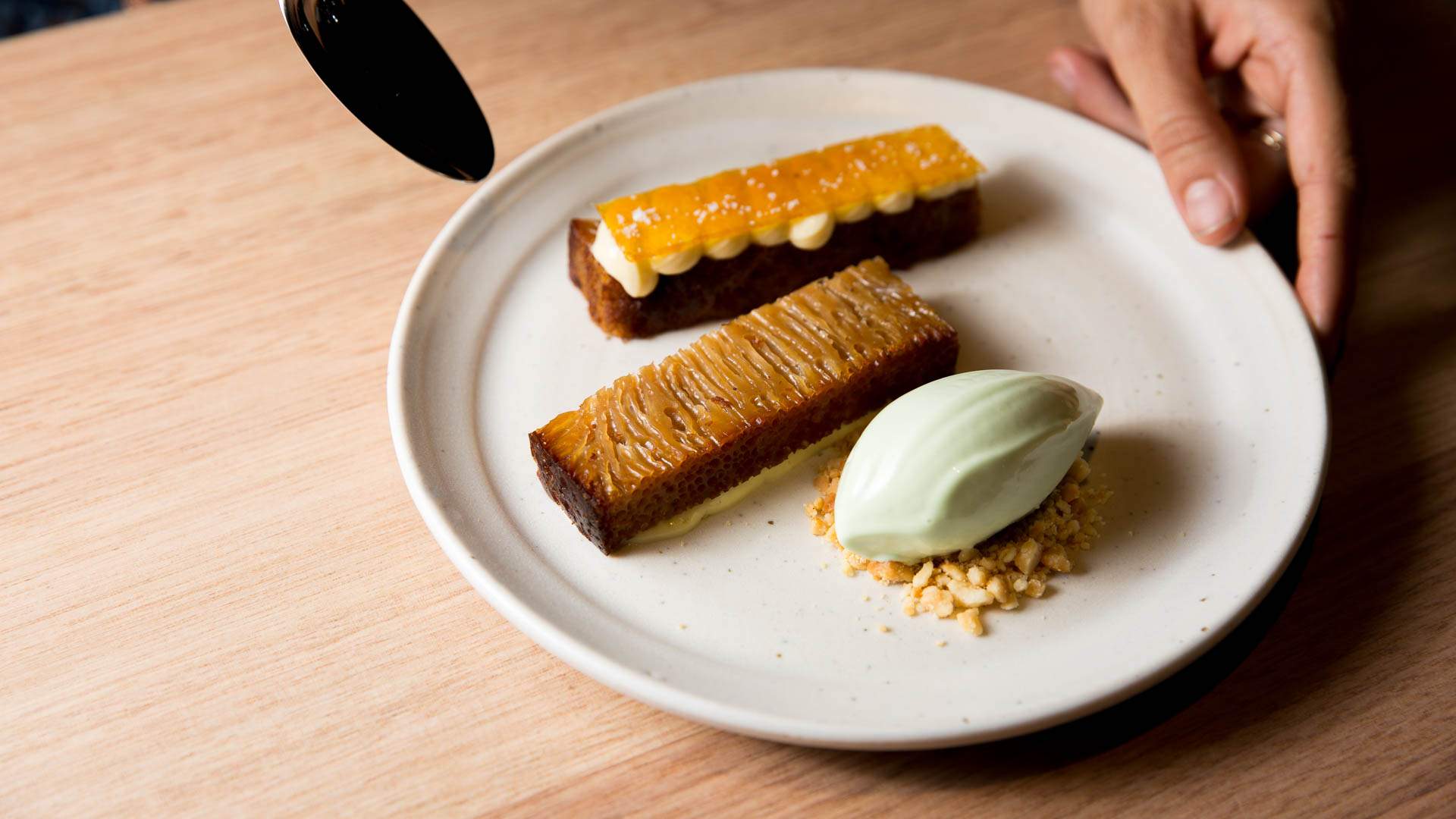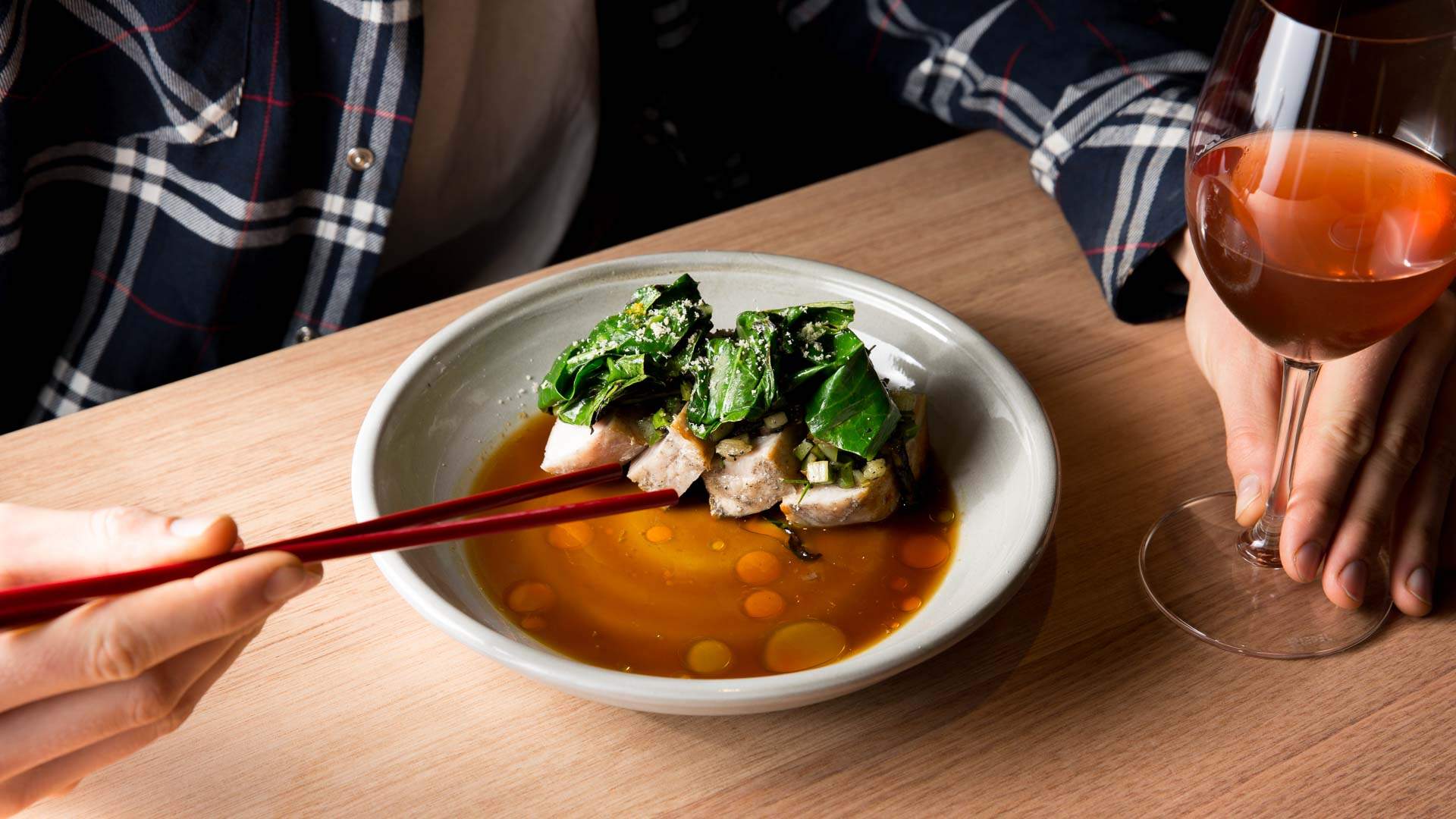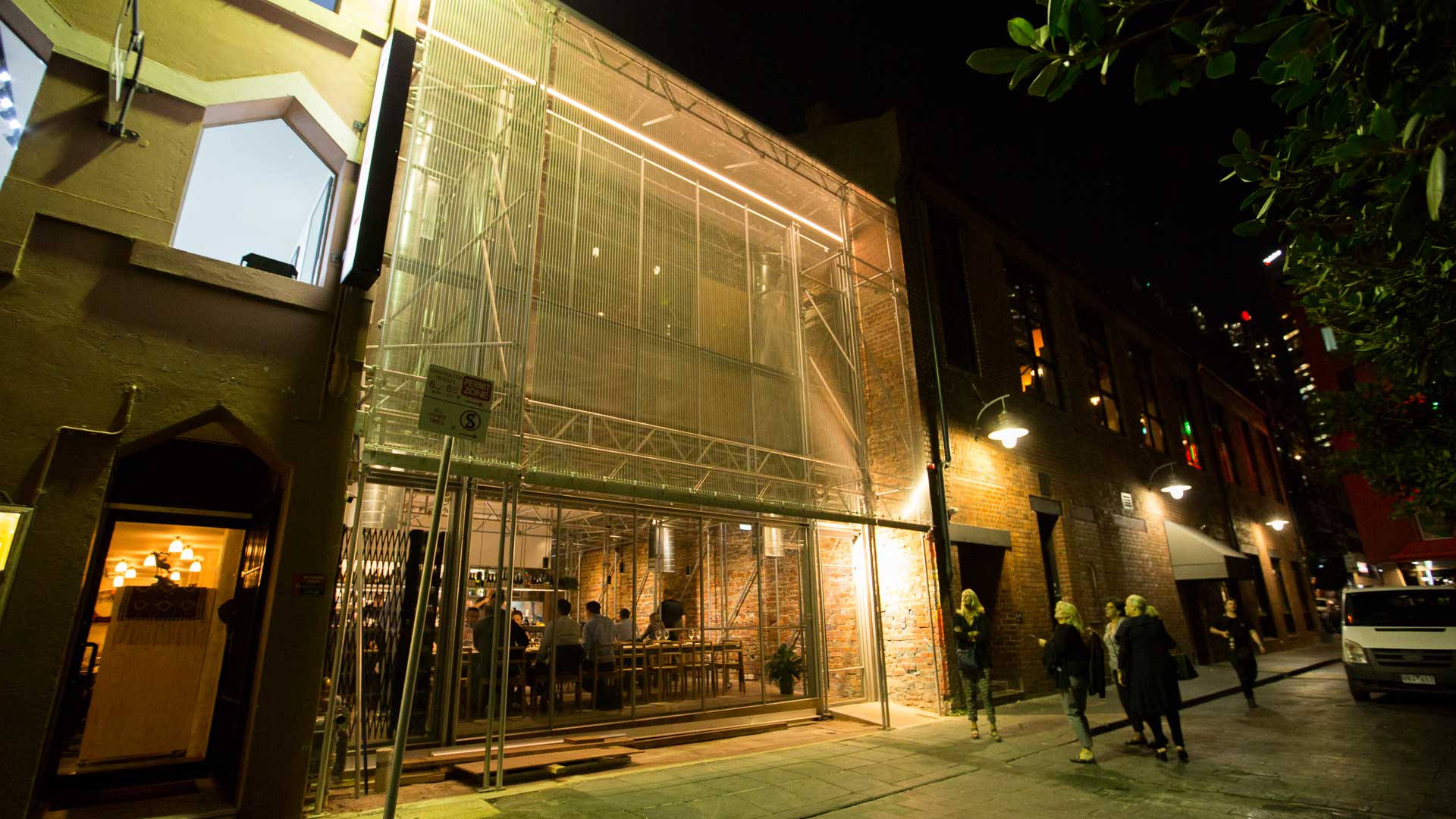
Sunda
A Punch Lane car park has been transformed into an inventive two-level Southeast Asian eatery.
Chinatown’s Punch Lane is getting some serious action this month, first with the opening of Joseph Abboud’s modern Middle Eastern restaurant Bar Saracen, and now with the group behind the Hotel Windsor launching a new Southeast Asian eatery, Sunda.
It’s opened in the block behind Longrain, which was previously an empty lot used as a car park. The Halim Group has recruited chef Khanh Nguyen to oversee the kitchen — he hails from Sydney, where he started out at 17 as apprentice to Luke Nguyen at Red Lantern, and has since worked his way up the ranks at Cirrus Dining, Mr Wong, Bentley and Noma Australia. The menu at Sunda will focus on Indonesian, Malaysian and Vietnamese cuisines, combining rich, bold flavours and some lesser known ingredients with Australian produce and modern cooking techniques.
Sunda opened this week, and we’ve got a look-in. In partnership with Zantac we’re uncovering the best new restaurants and bars around Australia as they open. We’ve got the lowdown on the team, the design and — most importantly — the menu so that you can head in educated, excited and ready to take it all in — with a few dishes recommended by the chef, no less.

The Team
“A few million years ago during the ice age, the Southeast Asian continental shelf was one big massive land mass and it was called Sunda back then,” says group director Adipoetra Halim.
As such, he felt Punch Lane was the perfect location for a Southeast Asian eatery, with the laneway reminiscent of the sides streets of Asia and the car park just waiting to be transformed.
“I walk past there a lot and always thought there was so many better uses for this space,” says Halim. “Punch Lane is one of the last remaining residential laneways in the CBD and it has a row of townhouses that sort of have that Asian backstreet feel, where families open up restaurants on the ground floor and live upstairs. For me, it’s the perfect location for a modern Asian restaurant, plus it’s obviously adjacent to Chinatown.”
An eatery at this address has been a long time coming — it was previously announced, way back in 2016, that chef Adam Liston would open Honcho in collaboration with the Halim Group, but the venture was then scrapped due to ongoing building delays. Liston ended up heading back down to Adelaide to open Asian barbecue restaurant Shobosho last year, leaving room for Sunda to finally realise the group’s plan to turn the venue into an Asian eatery.
“When we started leasing the site we were discussing with Adam about the possibility of doing Honcho, but we encountered a lot of delays in obtaining permits, licenses and convincing the neighbours that we’d be a good addition,” says Halim. “After Adam decided to go back to Adelaide we still really wanted an Asian eatery in the space. I was eventually introduced to Khanh [Nguyen], who, in a different city, had been thinking of similar ideas about doing modern Southeast Asian cuisine. The rest is history.”
Along with Nguyen and his impressive resume, the opening team boasts the talents of sous chef Cian Fenaughty (Luxembourg Bar and Bistro, Cutler and Co., Dinner by Heston London), sommelier Brad Hammond and restaurant manager Kosta Kalogiannis (Longrain, MoVida).
“We’ve got a very strong team and I think they all got attracted to this venue because we’re really doing something different with Southeast Asian food,” says Halim.
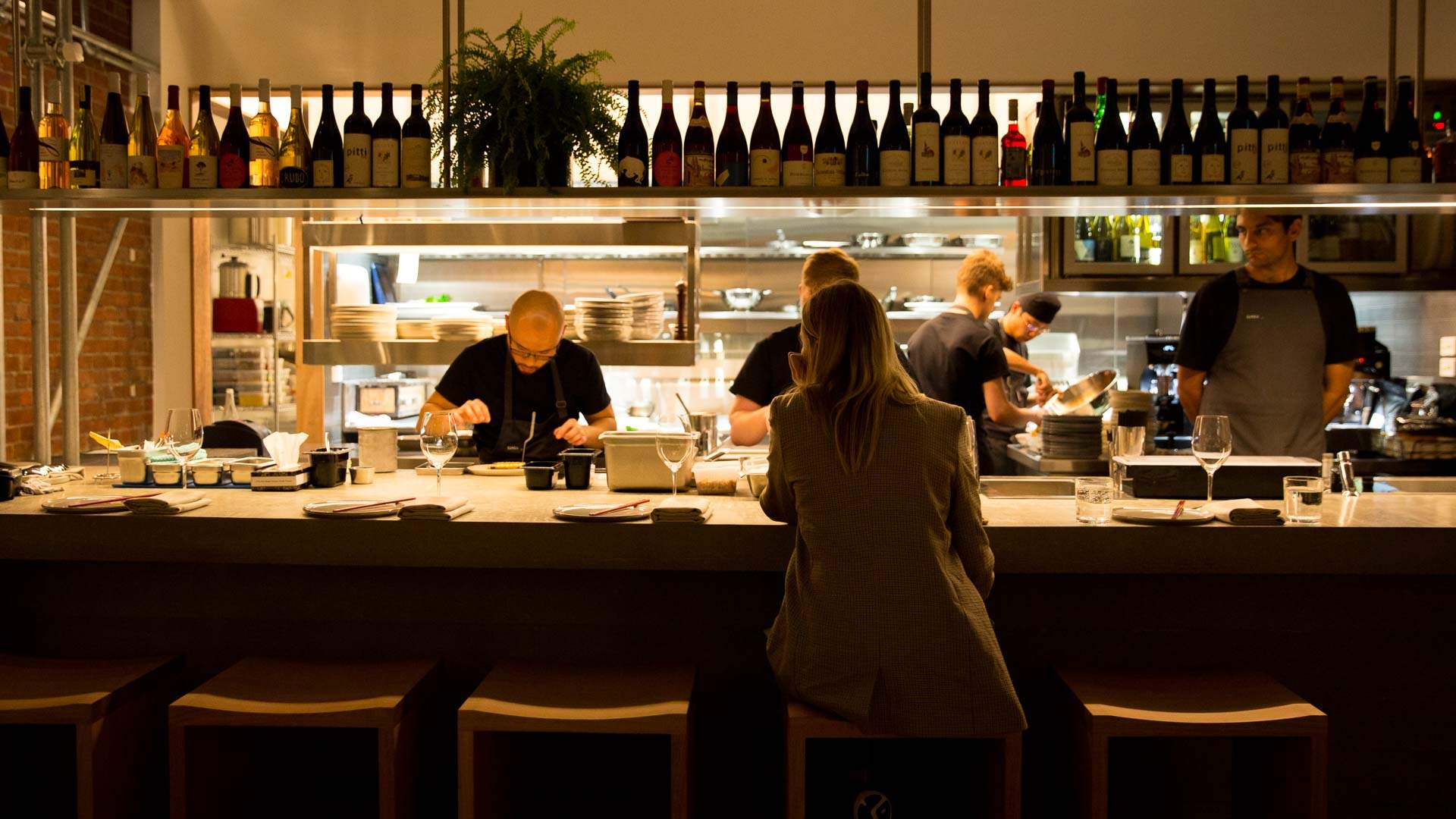
The Design
Designed by award-winning architect Kerstin Thompson, the fit-out transformed the former car park by taking inspiration from the streets of Southeast Asia. Standout design elements including a scaffolding-like, steel mesh exterior that filters sunlight by day and seems to glow by night.
“We first went to Kerstin with the idea in mind that it’s a residential lane adjacent to townhouses and we talked about the shop houses in Asia,” says Halim. “Originally for Honcho we were looking at a very short-term lease, so Kerstin came up with using the scaffolding materials. Once we knew we’d be opening Sunda long-term, we developed it further to see how we can use the scaffolding to build a permanent building. The idea is a very light, airy and metallic structure of steel mesh.”
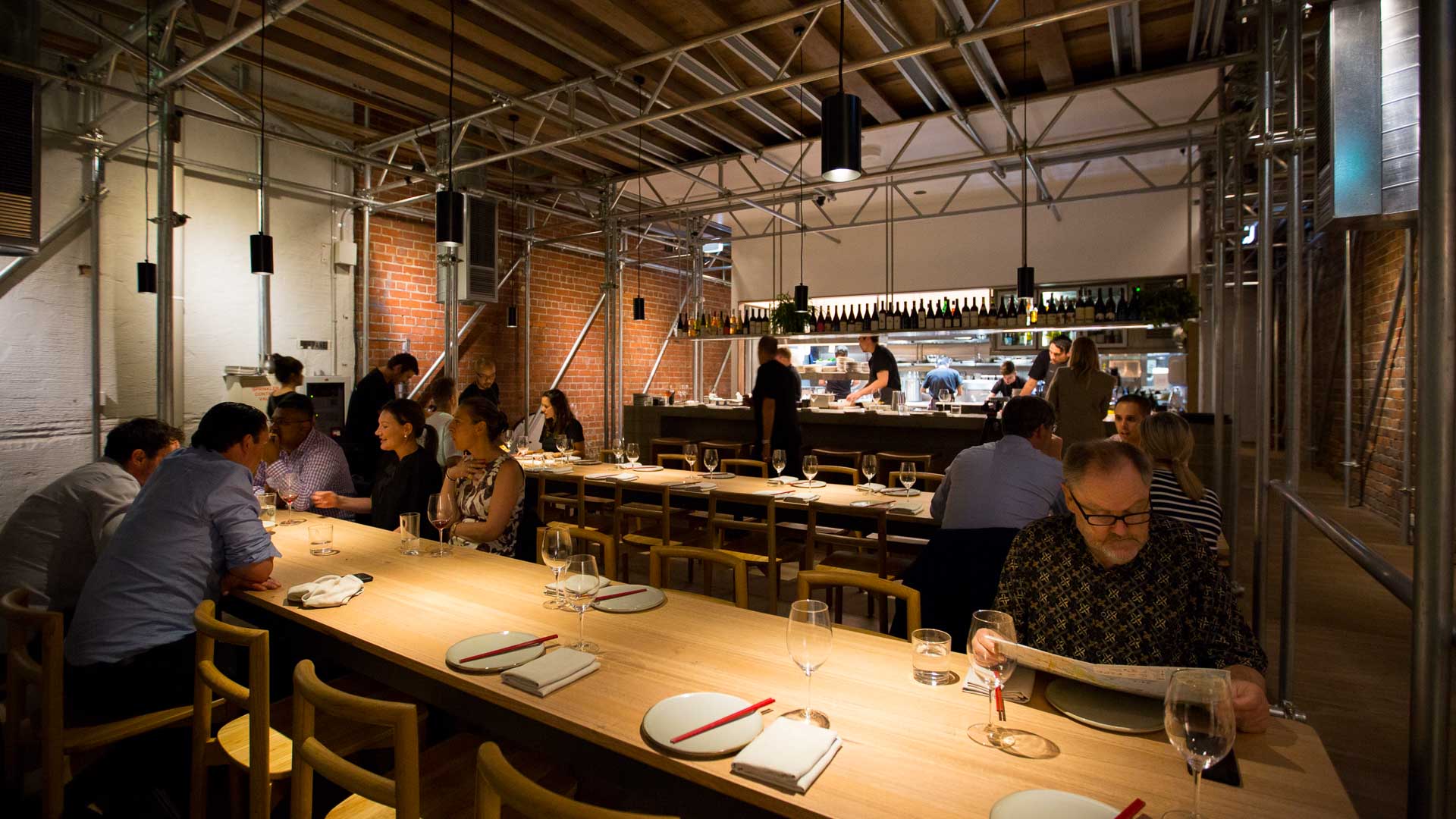
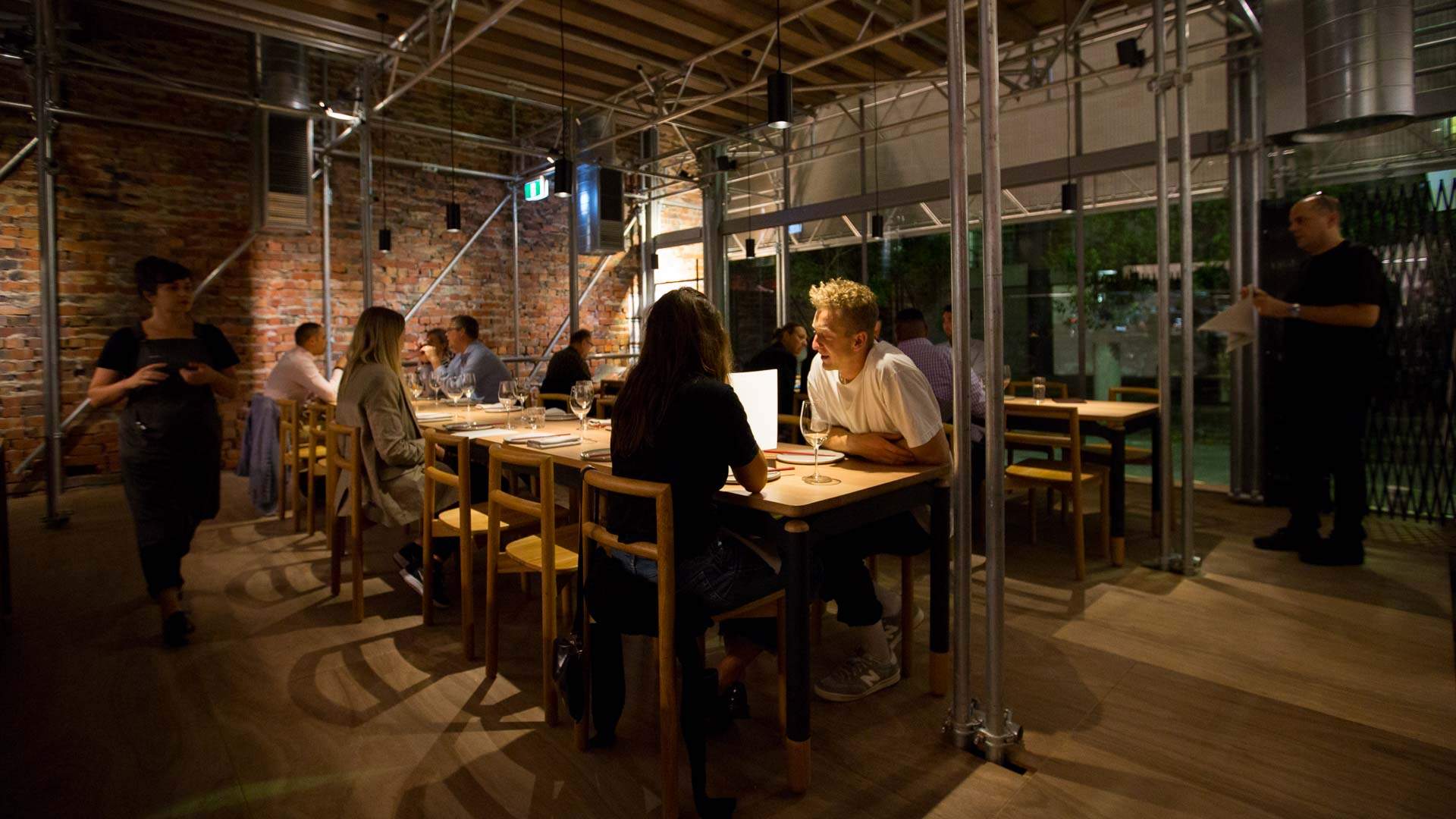
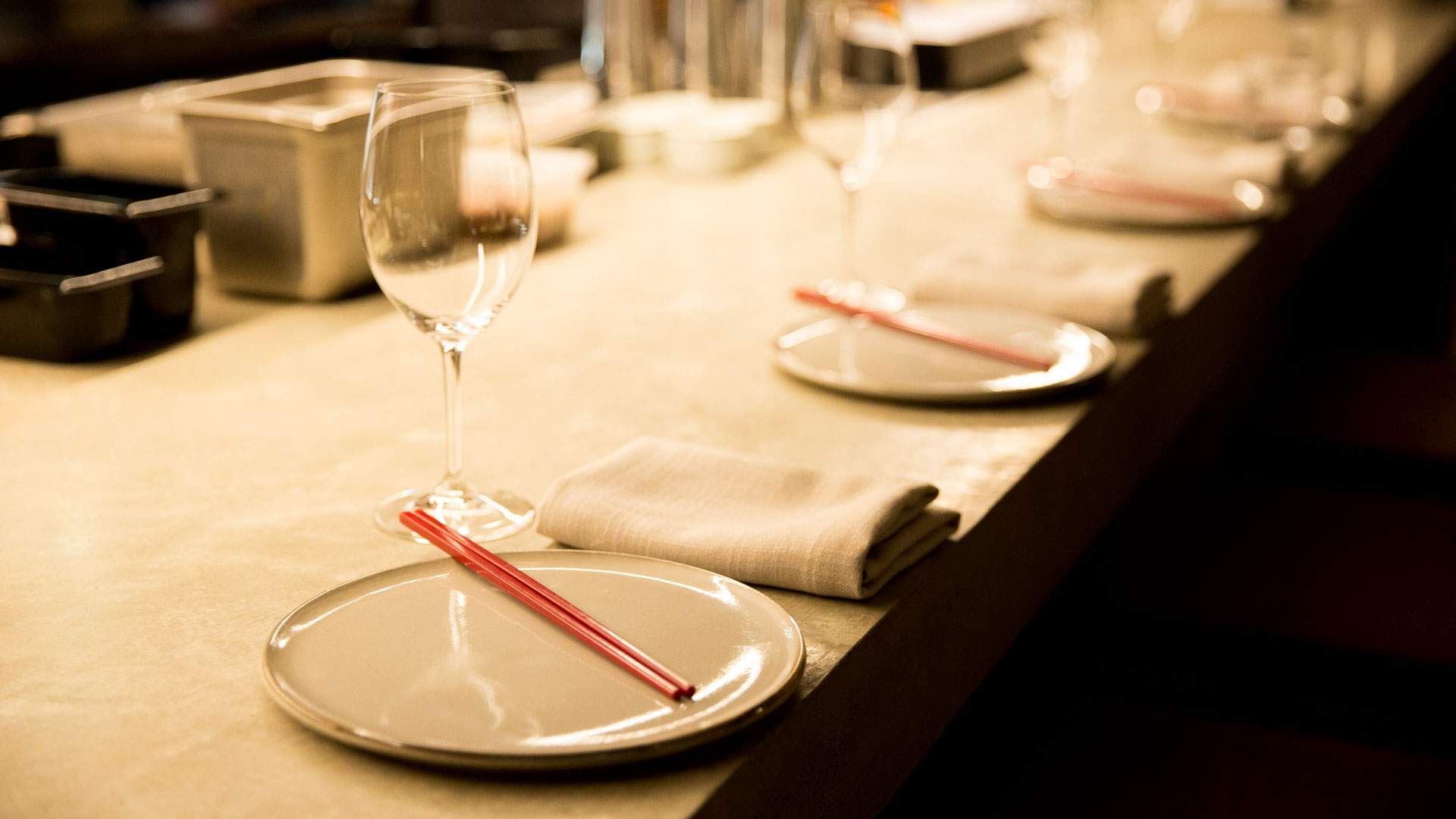
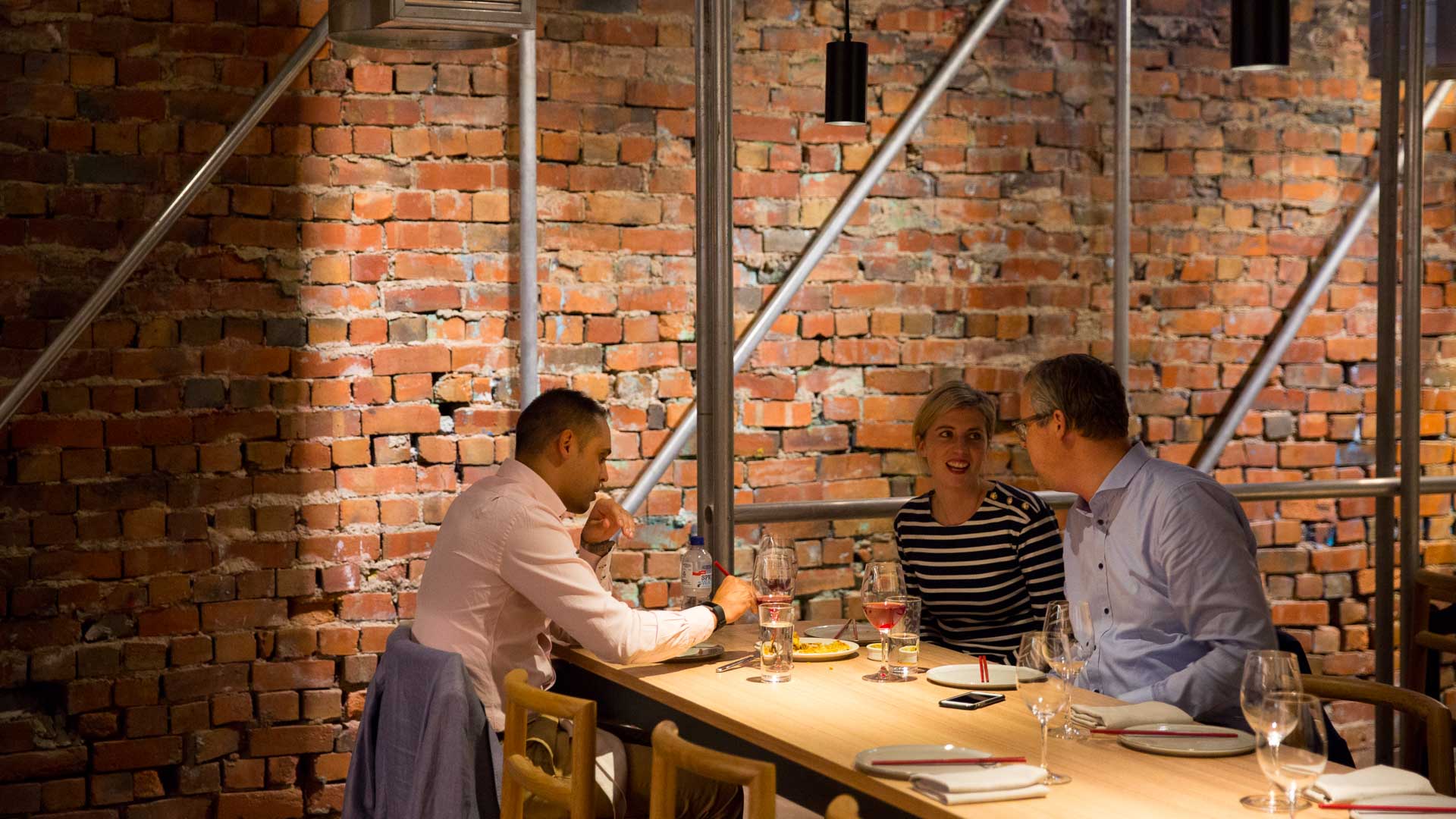
The two-level venue has room for 78 seats all up. The ground floor centres around an open kitchen bar that takes up half the space, with two large communal tables fitting 18 each and encouraging the Asian spirit of family-style eating. On the mezzanine level, smaller tables can be used for couples or the space can be hired out for semi-private functions.
“We tried to respect both of the venues next to us, since Longrain and Bar Saracen are both heritage buildings,” says Halim. “Instead of creating internal walls, we just basically wedged the new structure in between the two brick buildings, so as a result you can see their exposed brick walls on either side of the restaurant. We tried to limit ourselves to what’s there and use very natural materials.”
This means minimalist use of steel, concrete and native spotted gum tree timber to compliment the existing brick, with the aim for a structure with a low carbon footprint.

The Menu
The share menu is very much inspired by Nguyen’s food journeys throughout Southeast Asia, where he literally ate his way through the region.
“First I went to eight different cities in Vietnam and ate over 100 dishes in three to four days; then I went to Singapore, Medan in Indonesia and Penang in Malaysia and ate 60 dishes in ten days,” says Nguyen. “Then a few months ago I went to Bali and tried 50 dishes in four days.”
Needless to say this chef has a big appetite and he’s bringing that passion for food into Sunda. The menu will focus on Indonesian, Malaysian, Vietnamese and Thai cuisines, combining rich, bold flavours and some lesser known ingredients with Australian produce and modern cooking techniques. Despite their differences, these cuisines have more in common than you may think.
“They’re different but surprisingly the flavours are all very similar,” says Nguyen. “When I traveled to Indonesia and Malaysia I had the asam laksa and realised it tastes just like the combination of two popular soups in Vietnam. And almost every Southeast Asian country has their version of a bika ambon cake, too.”
Even the Australian native ingredients seem to blend in perfectly. “Somehow they work really well in Asian cooking” says Halim. “In classical western cooking, chefs tend to season with just salt and pepper but in Asian cooking they use a balance of sweetness, bitterness, tangy — what people refer to as this umami flavour combo — and a lot of the native Australian ingredients carry these elements.”
This passion for local ingredients stems from Nguyen’s time at Noma Australia, where he learned from the best in the foraging field, Rene Redzepi. “My internship at Noma was very inspirational, not only in using native ingredients but I also learnt a lot about fermentation, making flavoured oils and using different techniques,” says Nguyen.
It’s also at Noma that Nguyen first got the idea for his Vegemite curry, which is sure to be an eyebrow-raising dish. He makes the Vegemite-like spread in house and combines it with curry, serving it with traditional, freshly-made roti.
“At Noma, they made their own version of Vegemite, which takes a very long time to make. So I’m using some of their steps and incorporating it with ingredients you find in a Southeast Asian curry. It turned out surprisingly good.”
Apart from native ingredients, Nguyen is sourcing a lot of lesser known Asian ingredients from overseas, many of which he only discovered on his recent travels. These include the ginger flower used in the Spanish mackerel assam laksa and the andaliman Sichuan pepper — a more fragrant and citrusy version that still gives the numbing sensation — used in sashimi-style scallops. Plus sawtooth coriander (sweeter and more intense aroma than what you’re used to) and imported palm sugar (less sweet with more molasses and caramel notes).
“Those are the flavors I really enjoy eating and opening a refined Vietnamese restaurant is something I’ve been wanting to do for a long time, since starting out at Red Lantern,” says Nguyen. “After travelling through Vietnam, I realised there’s only so much I can do with Vietnamese food and so that’s why I started leaning toward a broader Southeast Asian cuisine instead.”
Think share dishes like grilled baby corn served in the husk with fermented beancurd and cured kangaroo tartare that combines elements of Thai-style larb with a Vietnamese bò tái chanh (rare beef salad with lime dressing) — it’s served with smoked egg yolk over butter lettuce and toasted rice. Nguyen’s unusual take on the Indonesian specialty otak otak combines silky parfait with spiced spanner crab meat and is served with finger lime, chilli and sambal condiments and homemade puffed rice crackers.
On the drinks side of things, sommelier Brad Hammond has curated a concise wine and cocktail list that can stand up to the menu’s bold flavours. The list favours smaller winemakers and more aromatic wines that pair with Nguyen’s fragrant spices.
“We have worked closely to complement the distinct flavours on the menu,” says Hammond. “The modern take on the cuisine has allowed us the opportunity to pair unique beverages other than the lighter, aromatic ones that you usually associate with Asian flavours.”
“Brad has tasted the whole menu and hand-picked his favourite drops that make sense with the menu,” says Nguyen. “Usually Asian restaurants are not really wine focused and we want to change that.”
They’ve also got cocktails that use the andaliman pepper and ginger flower and beers from local craft breweries like Hargreaves Hills and La Sirene.
CHEF’S PICK: FIVE THINGS TO ORDER
So what should you order? Nguyen has spent months on this menu, so we thought he’d be the best person to ask. Here are five picks from the Sunda menu.
Sunda is now open at 18 Punch Lane, Melbourne. For more info, visit the website.
Keen to check out more newbies? Have a sift through the newest crop of Melbourne openings.
To find out more about Zantac, visit the website. Zantac relieves heartburn. Always read the label. Use only as directed. If symptoms persist consult your health professional.
Words: Marissa Ciampi. Images: Kate Shanasy.


